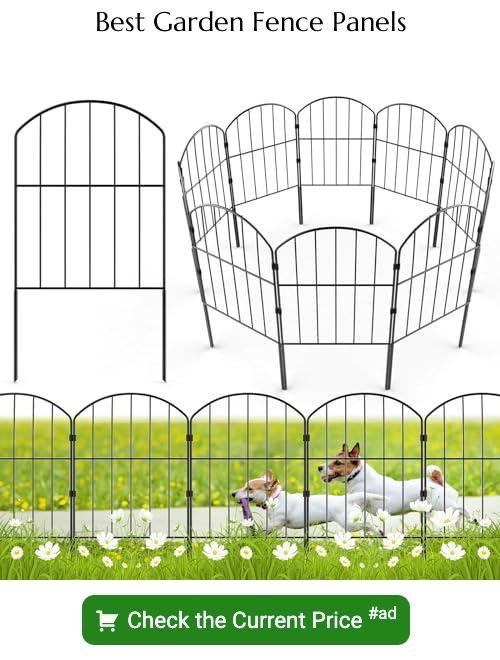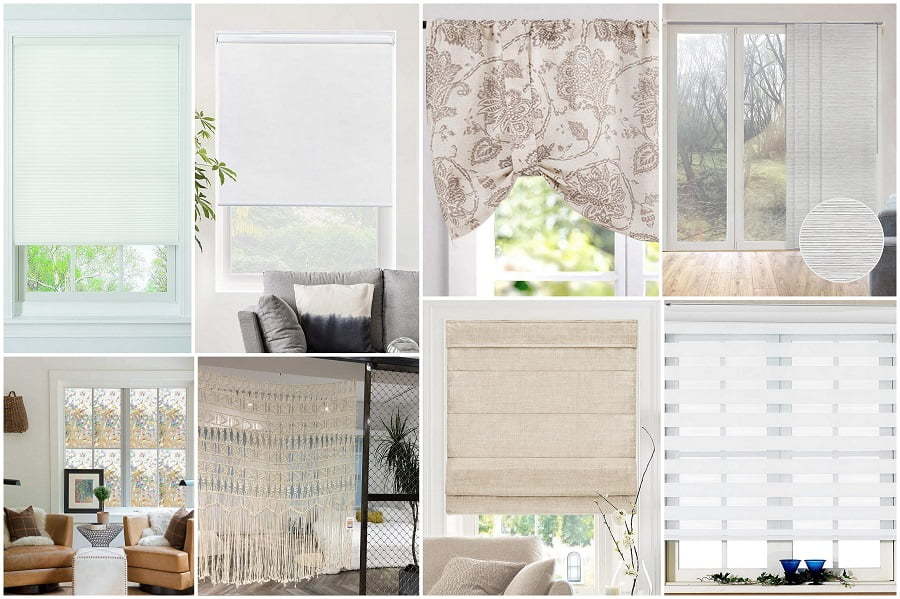Last updated on
A fence is a structure that provides security. But that’s not all; it should also be environmentally friendly and adds beauty to your home. Here are the alternatives.
Fences protect your home and provide privacy for your family. Homeowners also use fences to set the boundary of their properties. However, you don’t want to spoil the look of your home and backyard with just any kind of fence. Make an effort and try these fence alternatives.
Don’t just think about the security fences offer. It’s also good to include aesthetics in your list. There’s also the budget to think about. You don’t have to spend much on adding fences to your home. We have a list of affordable yet aesthetic fence options for you.
Read more and see the list below.
Brushwood Fence

Made of natural materials like sticks or twigs, you are good to go with a brushwood fence when looking to install an attractive and rustic-looking barrier to your property. The color and texture of the material make it seamlessly blend with the surroundings. This means that a brushwood fence is a good option for homeowners who prefer a not-too-conspicuous barrier for their front or backyard.
You can make a brushwood fence if you are familiar with the know-how. Alternatively, you can purchase pre-made brushwood panels at stores like Lowe’s and Home Depot. However, remember that brushwood is not water-resistant, and unless it receives enough sunlight and a strong breeze, your brushwood fence may quickly turn moldy and lose its appeal.
Cost: $40 to $90 per linear foot.
Bamboo Fence
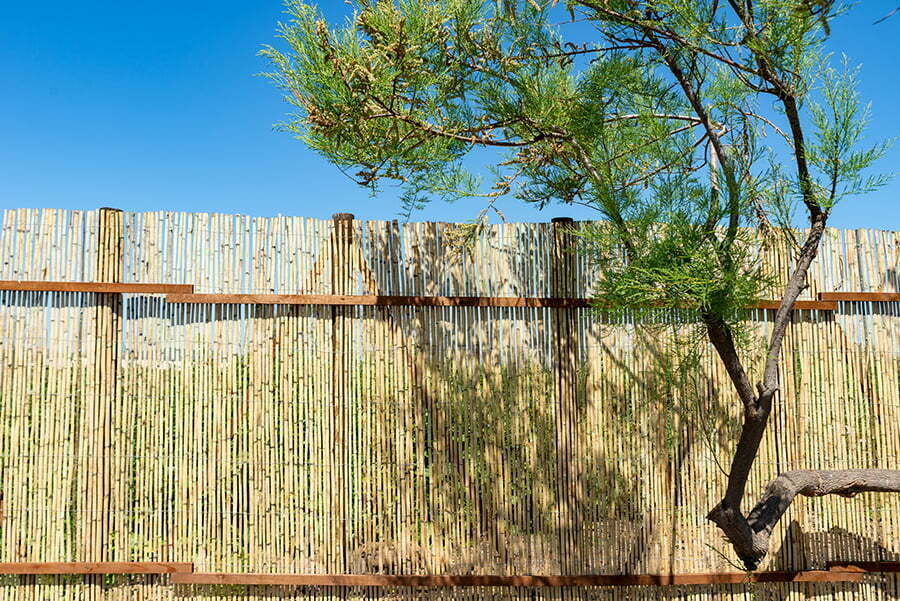
Bamboo fences are great as an earth-friendly and sustainable option, and they look great too, especially for bungalow-type homes (ever seen a Japanese house, and you’ll know the appeal of a bamboo fence).
Moreover, it is easy to grow your bamboo fence if you’re living in warmer tropical climates. Plant them around the perimeter of your property, let them grow a little more than the desired height, and then cut the tops off uniformly. You’ll also be happy to know that bamboo grows exceptionally quickly, up to 30-36 inches in 24 hours.
Alternatively, you can buy pre-made rolls of natural split bamboo fencing at Lowe’s, Home Depot, and other places.
Cost: $10 to $23 per linear foot.
Stone Fence

Consider a stone wall fence if you are not worried about keeping critters away or sheltering your property from the wind. Stone fences look extremely attractive (especially in yards with enough greenery) and are easy to install since the wall will require no mortar. Let the plants and moss grow on the stones to get a stunning natural look.
However, if you prefer a cleaner look, you can also get that by pressure washing the stones. Remember, though, that rocks are expensive to buy, meaning this will be a costly project.
Cost: $25 to $90 per square foot.
Vertical Garden Fence
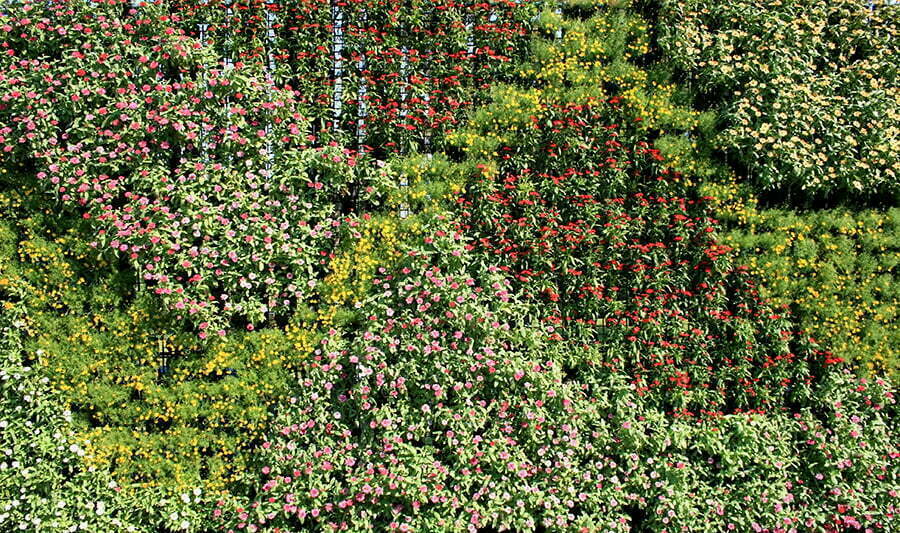
Vertical gardens are a great alternative to more common wood and metal fencing options. You can quickly grow several vertical gardens on different platforms and place them next to each other to construct your fence. When designed well, vertical gardens can save space and water since the plants grow up instead of out.
Cost: $12 or more per linear foot.
Hedge Fence
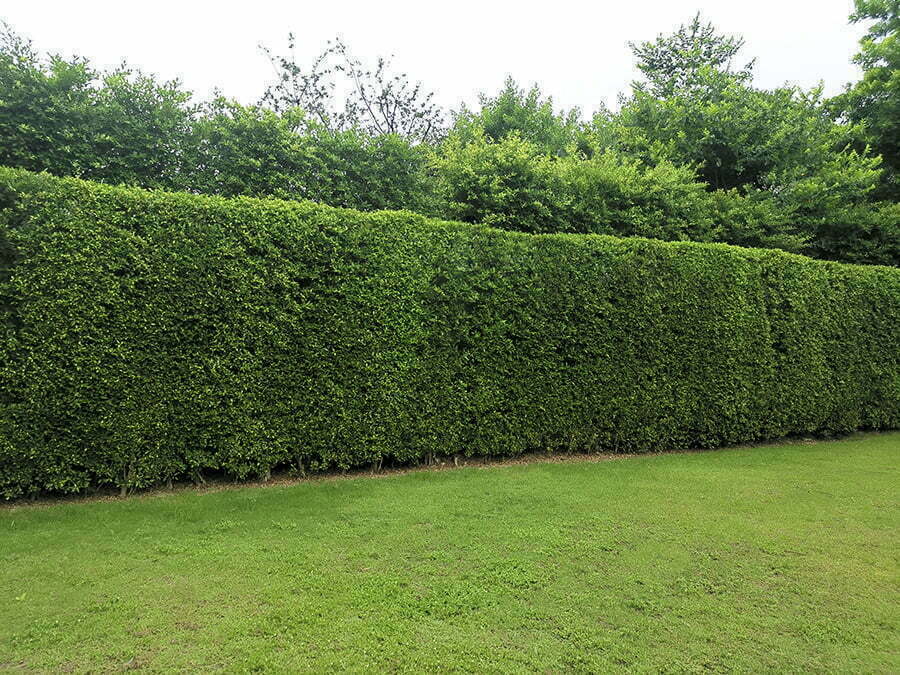
Putting up hedges as a fence makes for a great versatile “living” fence option. You can easily customize the look by choosing what sort of plants to install for your hedge fence.
Choose trees or plants that can grow up to 20-30 feet over time for a tall fence. Or settle for some evergreen shrubs (that grow 4 to 10 feet tall) if you want a shorter fence, and you can then prune and sculpt it according to your desired look.
Finally, you may consider a hedge fence combining shrubs, evergreens, flowers, and trees. The possibilities are endless. Didn’t we mention versatile?
Cost: Depends entirely on the plants you choose.
Corrugated Metal Panels
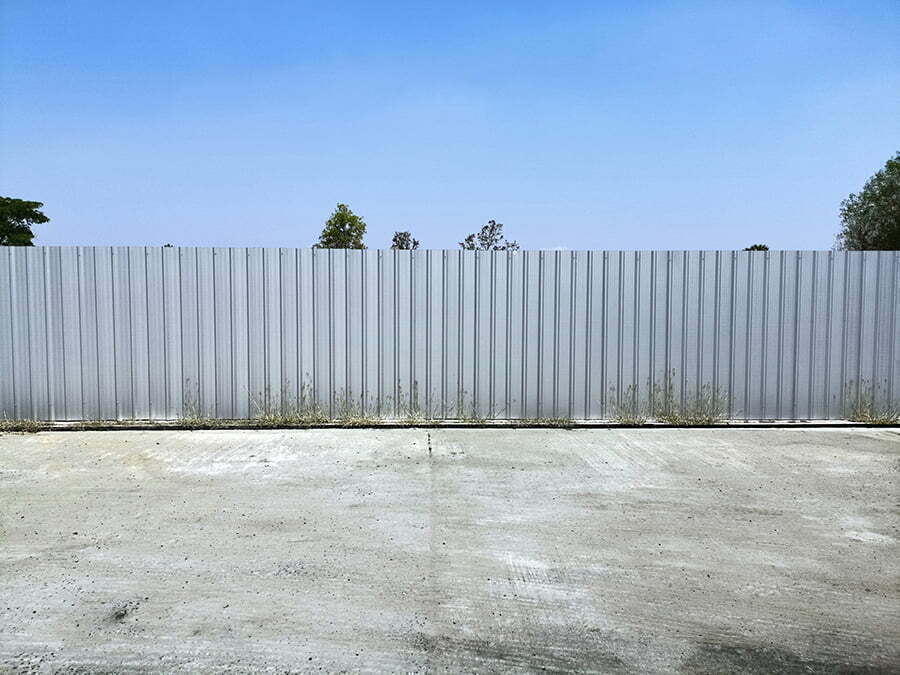
It is not the most attractive of options. However, if privacy and durability are your most pressing concerns, corrugated metal fences are an excellent functional choice.
It is also cost-effective; you can install a corrugated metal fence easily and quickly. As for the looks, painting the panels in neutral, matte colors will help offset the metal sheets’ bland and almost ugly appearance.
Cost: $107 to $90 per linear foot.
Rope with Ivy
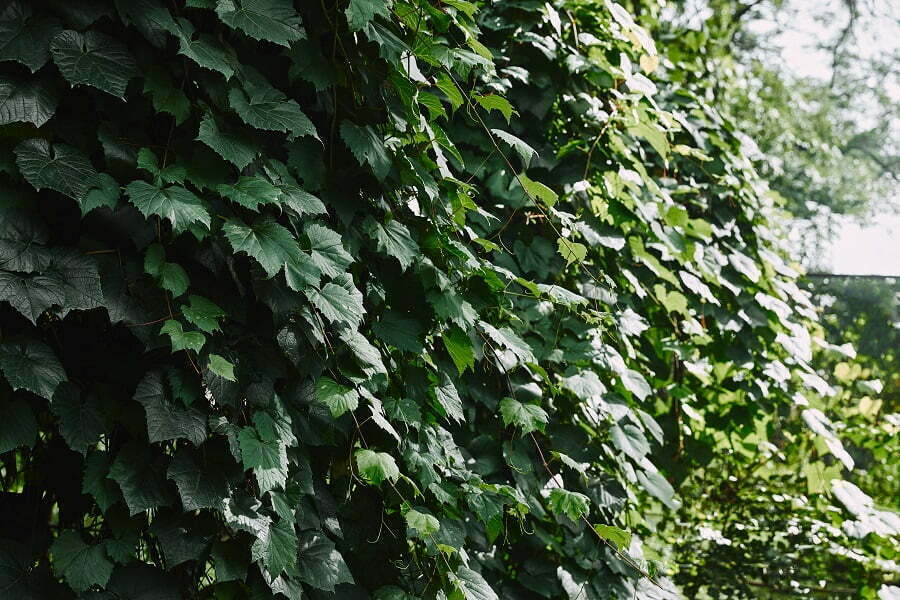
Run a thick rope around the border (and double the rope back a few times) where you want to install your fence, and this will give you a strong foundation for growing a climbing vine like ivy.
At first, you may need to train this evergreen perennial to wind around the rope. From then on, the plant’s natural spreading prostrate habit will make it hang off the rope, thus creating a beautiful verdant wall for your fence.
Ivy grows pretty quickly, and funnel-shaped blue and violet flowers appear around early autumn. This is also a budget fencing option since rope and ivy are inexpensive.
Gabion Wall
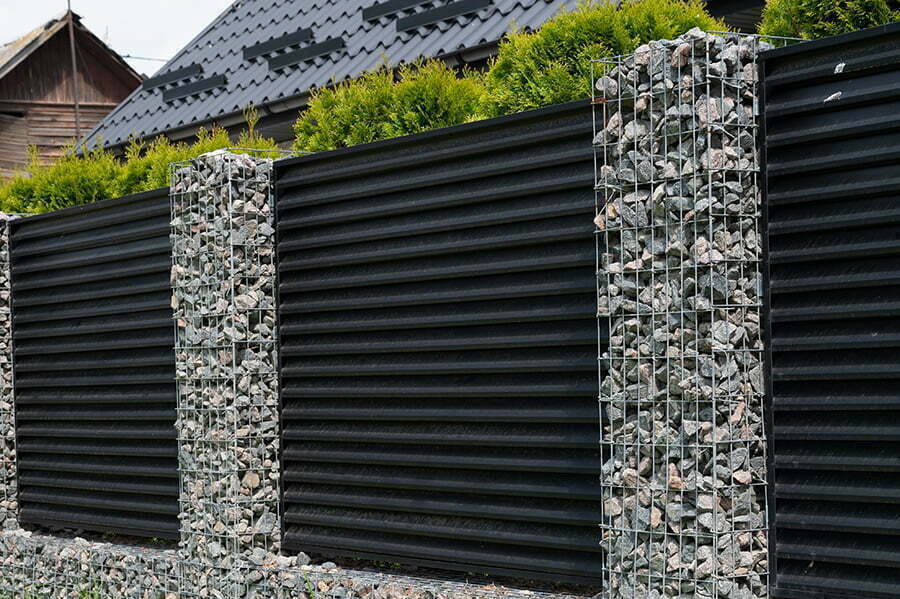
Do you want a simple, sturdy, beautiful barrier or garden enclosure for your space? Consider a gabion wall. Made of rocks, stones, concrete, and other materials held firmly together by a strong wire cage, gabion walls or fences have fast become popular due to their earthy appeal and sturdiness.
You may also consider combining individual blocks of gabion walls with other fencing options (such as spaced wooden slats) to create a truly unique and attractive fence for your property.
Cost: $5 to $40 per square foot.
Pallets
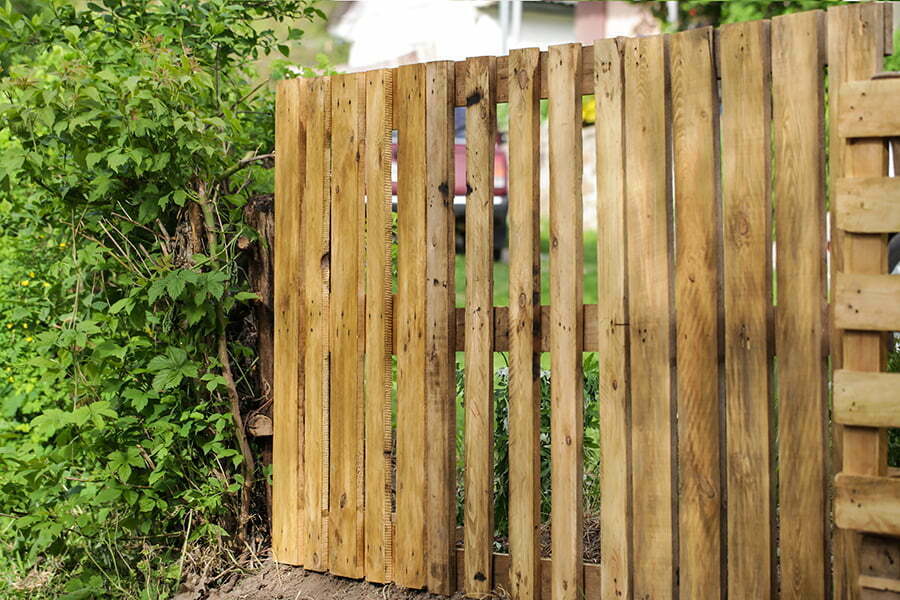
Pallet fencing is an easy, inexpensive, and recycled fencing option. They are also great for DIY projects. You can keep them or break them down into smaller slats.
Since they require little assembly, you can quickly finish your pallet fencing project. Next, arrange them in a vertical or horizontal pattern, according to what suits you best.
And you can expect to spend next to nothing since you can pick the pallets up gratis at warehouses, farms, construction sites, and other venues. Just make sure that the pallets you receive carry the IPPC (International Plant Protection Convention) logo, which certifies that the pallets are fumigated or heat-treated to prevent plant diseases or the spread of insects.
Split Rail Fence
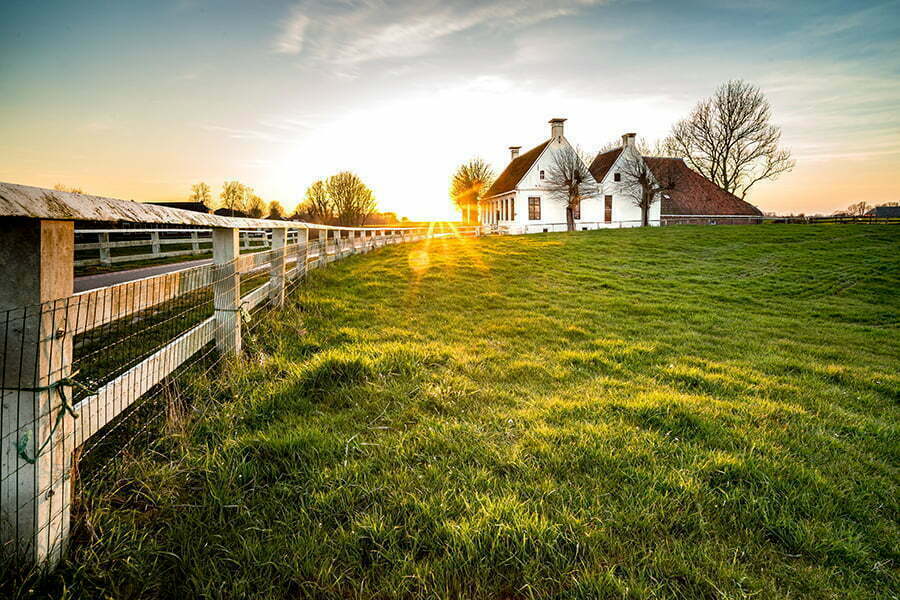
Choose a split rail fence commonly used on ranches and farms to corral animals if you want to give a rustic vibe to your yard. Another great DIY, as well as a budget option, you can either get the “split” timber logs ready to buy or make your own if you’re handy. The last option will help your purse.
Cost: $11 to $20 per linear foot.
Barbed Wire Fence

Commonly found in farmlands, barbed wire fences don’t look too good in urban or semi-urban areas. However, if you are more after security than aesthetics, barbed wire is an effective and inexpensive option that keeps unwelcome critters and/or people away from your property.
It is also one of the best options when you have a reasonably large area to cover and secure.
Cost: About $2 per linear foot.
Bush Fence
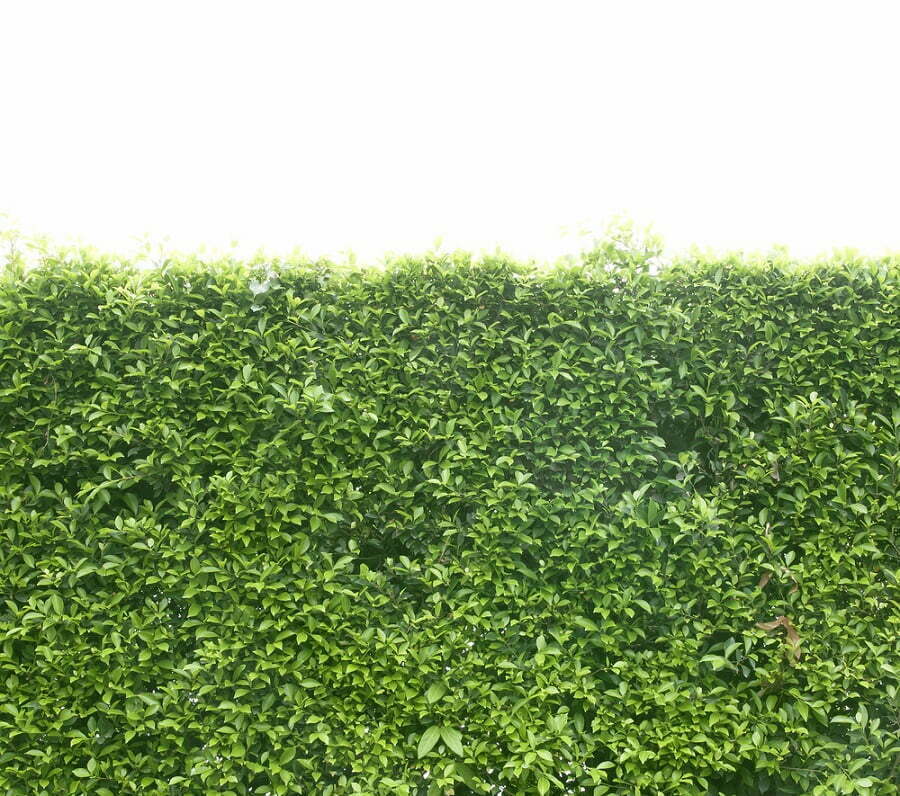
A bush fence is not too dissimilar from a hedge, and the two are often used interchangeably in common discussions. However, the critical difference between the two is that a bush fence is comprised entirely of bushes, whereas a hedge can be made of shrubs, bushes, or even smaller trees.
A bush fence is a good choice when you want a dense, dark living wall. Bushes, unlike shrubs, are not pruned or sculpted and are commonly left alone to grow and spread wild.
Cost: Depends on the plant(s) chosen
Cypress Trees

Several cypress trees have become famous for creating living walls for fences. Leyland cypress, for example, is highly popular in the United States for creating a natural fence structure that affords adequate privacy and adds to your property’s visual interest.
Cost: $20 to $30 per linear foot.
Old Door Fence
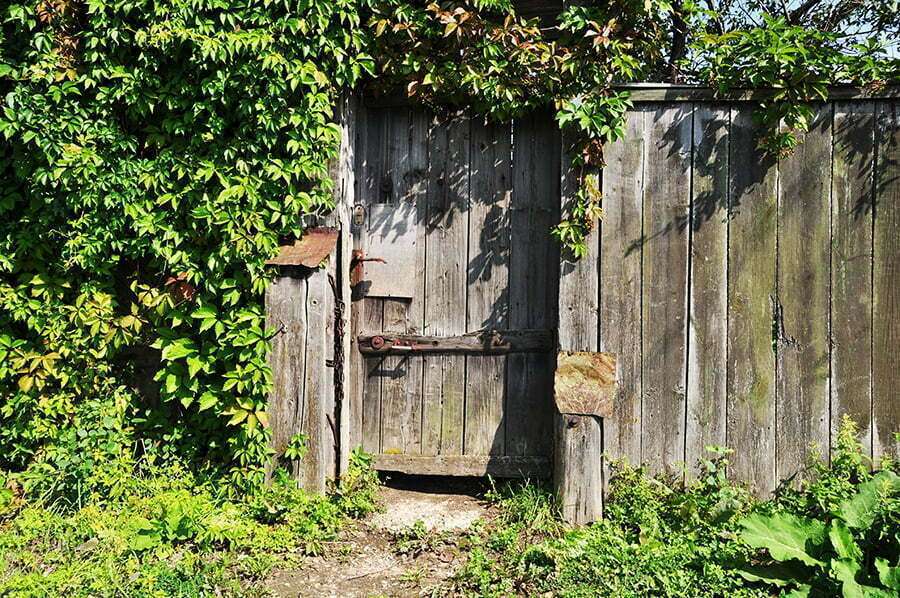
Create a unique (and quirky) yard fence by putting old used doors next to one another. This idea will not appeal to everyone. However, if you want to go a little nutty with your fencing choice, this may be the one for you.
Forage your attic, basement, and garage (and ask your friends to do the same) and attend cues and garage sales to get hold of enough old doors (practically for free) to complete the project.
Chain Link

Made of thick steel wires, chain links do not look particularly attractive. However, they are a good option when you want to fence in little pets and keep intruders out.
And if you want to improve the appearance of your chainlink fence, consider painting it in different soft or neutral colors and adding some wooden accents. Additionally, planting some fast-growing vines or small plants directly behind the fence is a great idea and will dramatically improve the fence’s appearance.
Cost: $10 to $20 per linear foot (expect to spend more if you’re painting the fence.)
Trellis

Typically used for zoning purposes within a yard, you can consider a complete trellis fence for your property when privacy and security are not your primary concerns. Traditional painted lattices or square trellises are not too robust but look extremely pretty, especially when partially covered with vines from the garden.
They will also allow some light to filter through, and you’ll appreciate the exciting patterns of shadows a trellis fence will create in your yard.
Cost: $60 to $350 per linear foot.
Potted Plants
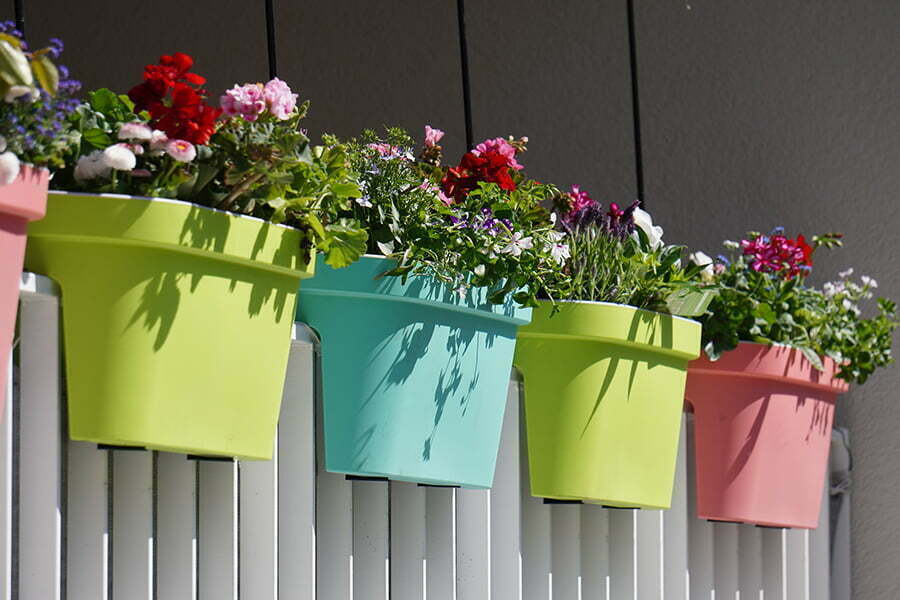
Consider arranging a row of potted trees or plants around the perimeter of your property to create an innovative and visually stunning potted plant fence. You may plant anything that agrees well with your local climate.
As for the pots, while there are many inexpensive options, we would choose attractive containers in varying styles and sizes instead. But, again, this is to give a genuine visual appeal to your fence.
FAQ
Hiring professionals to build your fence is always better, but if you don’t mind doing a bit of work, creating a handrail yourself is cheaper than hiring someone else. The cost of materials will vary depending on what type of material you decide to use.
The best plants for privacy overgrow and produce dense foliage. Some examples include English Ivy, Japanese Anemone, Black Eyed Susan, and Creeping Charlie.
A picket fence is probably the most straightforward fence to install because all you need to do is nail together boards. However, if you want something more elaborate, you might have to invest in special tools and equipment.
The average fence should take about two weeks to build, depending on your available time.
Recap
